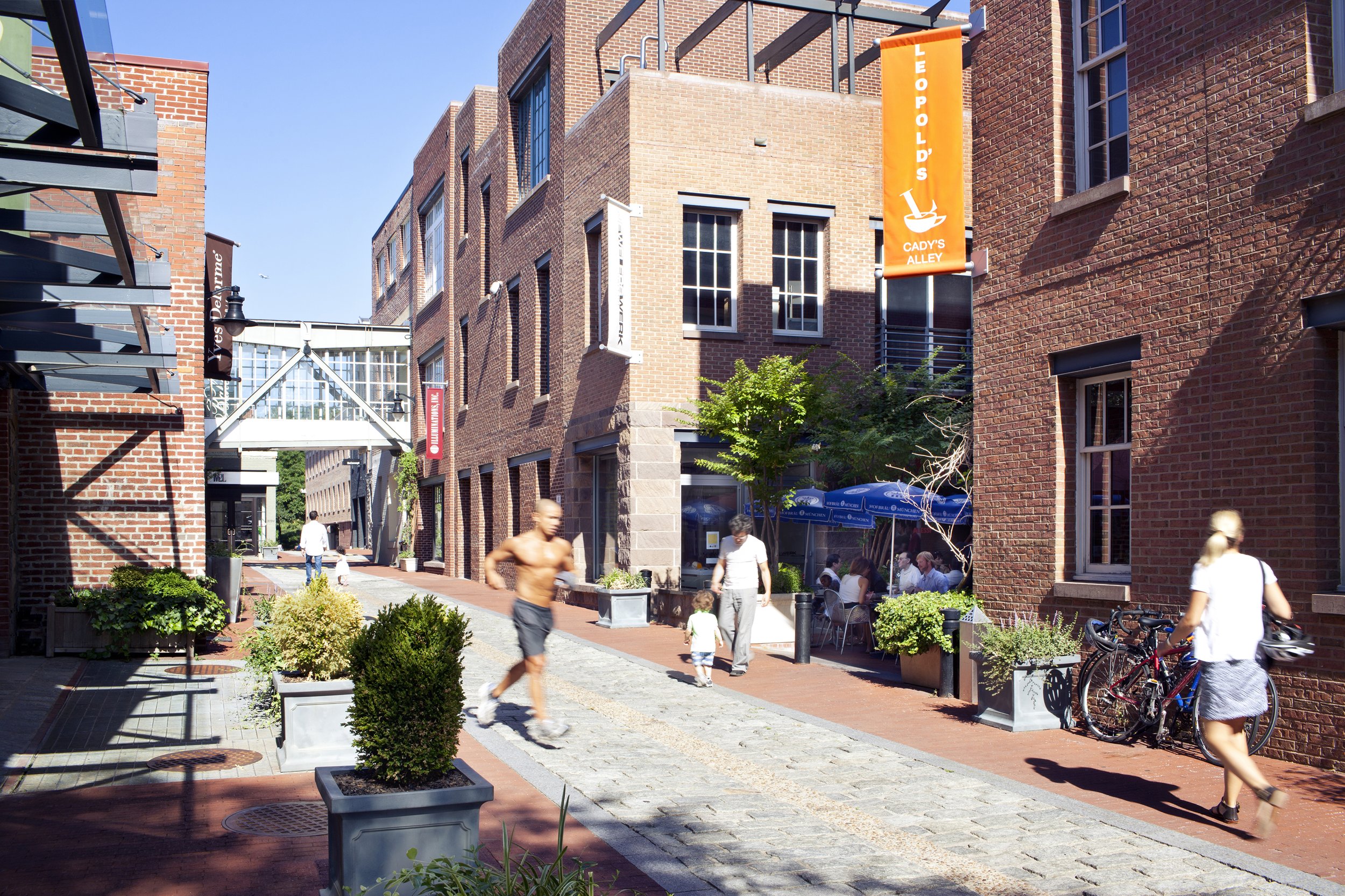
Cady's Alley Washington, DC
Services Provided
Landscape Architecture
Urban Design
People Involved
Jonathan Fitch
Awards
2006 Brick Institute of America Best in Show
2006 ASLA Potomac Merit Award for Design
2006 ASLA Maryland Merit Award for Design
2005 AIA National Merit Award for Urban Design
A service alley is repurposed into an elegant and active mixed-use retail and residential corridor in the historic Georgetown neighborhood.
The Cady’s Alley project was undertaken in order to create a new high-end design-oriented retail district organized around what was at the time a utilitarian service alley. The landscape scope includes the alley itself, a small courtyard with outdoor seating for a nearby cafe, and a pedestrian connection that leads through the block to a nearby retail corridor.
The design concept for the project emerged from two key determinations. First, that in order to preserve and enhance the character of the alley it should remain a shared space that provides undifferentiated access for pedestrians, private automobiles, and service vehicles. And second, that the paving design should remain sensitive to the historic character and materials of the space, but also celebrate the way the alley functions.
Accordingly, the paving pattern (and grading) acknowledges that runoff drains down the center of the alley while also helping to clarify circulation patterns for motorized vehicles and pedestrians.
During the development of this project, the design team worked closely with the developer, a total of five architects, the local Advisory Neighborhood Commission, the Commission of Fine Arts, the National Park Service and the District’s Department of Transportation. As the only consultant working on the entire project, the design team worked hard to make sure that the disparate components were coordinated in order to complement the historic character of the alley. Years later, the team worked again with Eastbanc in order to design and implement additional improvements including new lighting, traffic-calming, and decorative planters.






